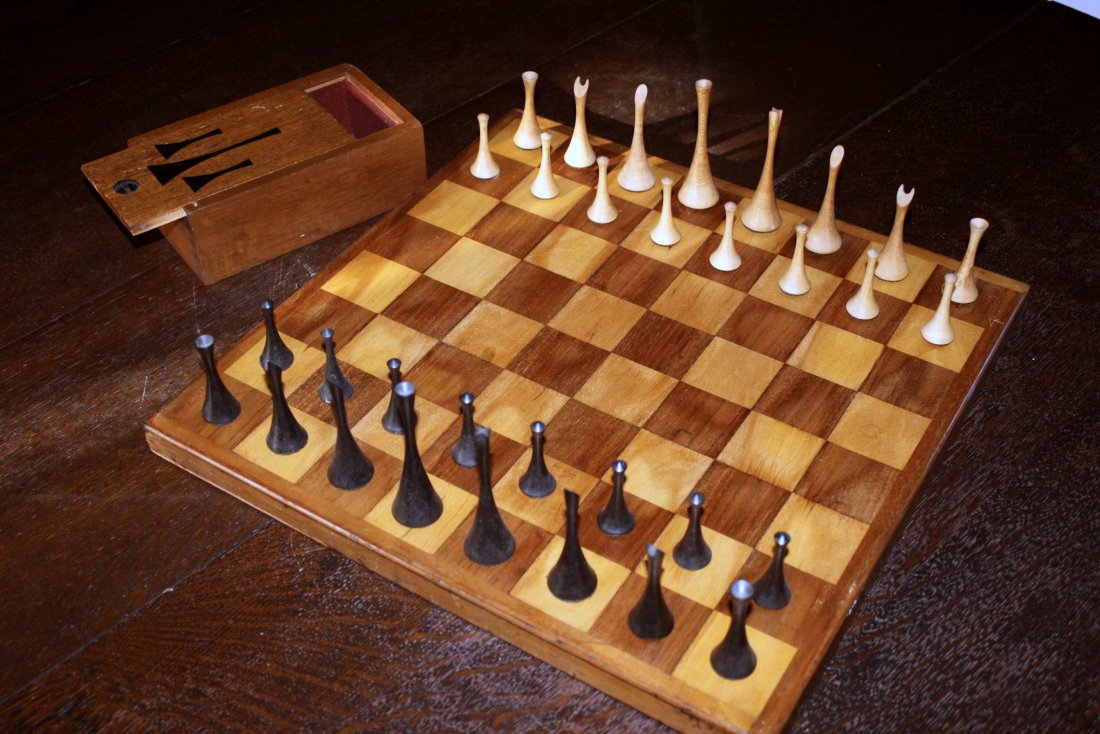

An adventure in design
Never an accomplished player myself I had long admired the game of chess. Occasionally I might win a game—I was once trounced by an opponent who sat with his back to the board.
Everyone is familiar with the traditional set of chessmen—the crowned king and queen, mitred bishop, archly maned knight, castellated rook, and the lowly and knobby pawn: the Staunton Pattern.
Perhaps my inspiration for a new design originated in Brâncuși’s “Bird in Space” which I had seen recently at MoMA, or maybe in roaming the aisles of Bonniers on Madison Avenue at lunch hour; around the corner from our office in the Paris Theatre building on the Plaza. Bonniers then led the New York retail world in offering a new, clean Scandinavian vision. I was then newly a part of that world having, in 1952, joined the office of famed industrial designer Henry Dreyfus.
I set out to create a design for a set of elegant chessmen. Ultimately, their form came to dominate the necessary distinctions made to show their game function and so, with some irony, my result seemed at odds with the current design mantra: “Form follows function” [1].
After having defined my idea on the drawing board I moved on to three-dimensional rendering of the pieces [2]. At Dreyfus I worked occasionally with John Amore [3], our product design model maker,  a master in the rendering of objects (radios, telephones, control knobs) in plasticine and plaster of Paris. From John I learned how to “turn” volumes of revolution in plaster on a small hand-cranked “lathe” made of coat hanger wire and sheet zinc [pic]. I produced a set in plaster; and a few pieces in lead using plaster pieces in making the casting molds. This work I managed to do in my apartment at 21 Jones Street.
a master in the rendering of objects (radios, telephones, control knobs) in plasticine and plaster of Paris. From John I learned how to “turn” volumes of revolution in plaster on a small hand-cranked “lathe” made of coat hanger wire and sheet zinc [pic]. I produced a set in plaster; and a few pieces in lead using plaster pieces in making the casting molds. This work I managed to do in my apartment at 21 Jones Street.
I was sufficiently taken by the result gradually to entertain the idea of a commercial retail venture. With a list of upscale New York City retailers I went around looking at non-traditional chess designs; there were many, and I didn’t think any of them were as nice as mine [4]. I found a shop in Germany that would make a sample set of pear and alligator wood and one of Dreyfus’ local makers for the metal set; to be gold and silver plated. A local shop made me a wooden box and another an elegant velvet lined box for the metal set.
 A Cornell classmate in WDC arranged to get me a design patent [5].
A Cornell classmate in WDC arranged to get me a design patent [5].
Thus armed I made appointments with retail buyers around town. What I discovered was that, while impressed with the design, retailers were not positioned to underwrite inventory. And so I would have to undertake that myself with no guarantee that the product would sell. My sample makers all gave me production estimates but, in the end having no real resources myself, I decided that I wasn’t rich enough or sufficiently brave to take the plunge.
So now I have two lovely sets. Chess anyone?

Notes:
[1] “Form [ever] follows function”.
[2] How nice it would have been to have had a three-dimensional printer!
[3] John Amore, American Acadamy, Prix de Rome (sculptor) 1940. Well known medalist.
[4] No Google then, but just Google images for “chessmen” now!
[5] US Patent Office, Des. 178,946, Patented Oct. 16, 1956 “SET OF CHESSMEN”
US Patent
